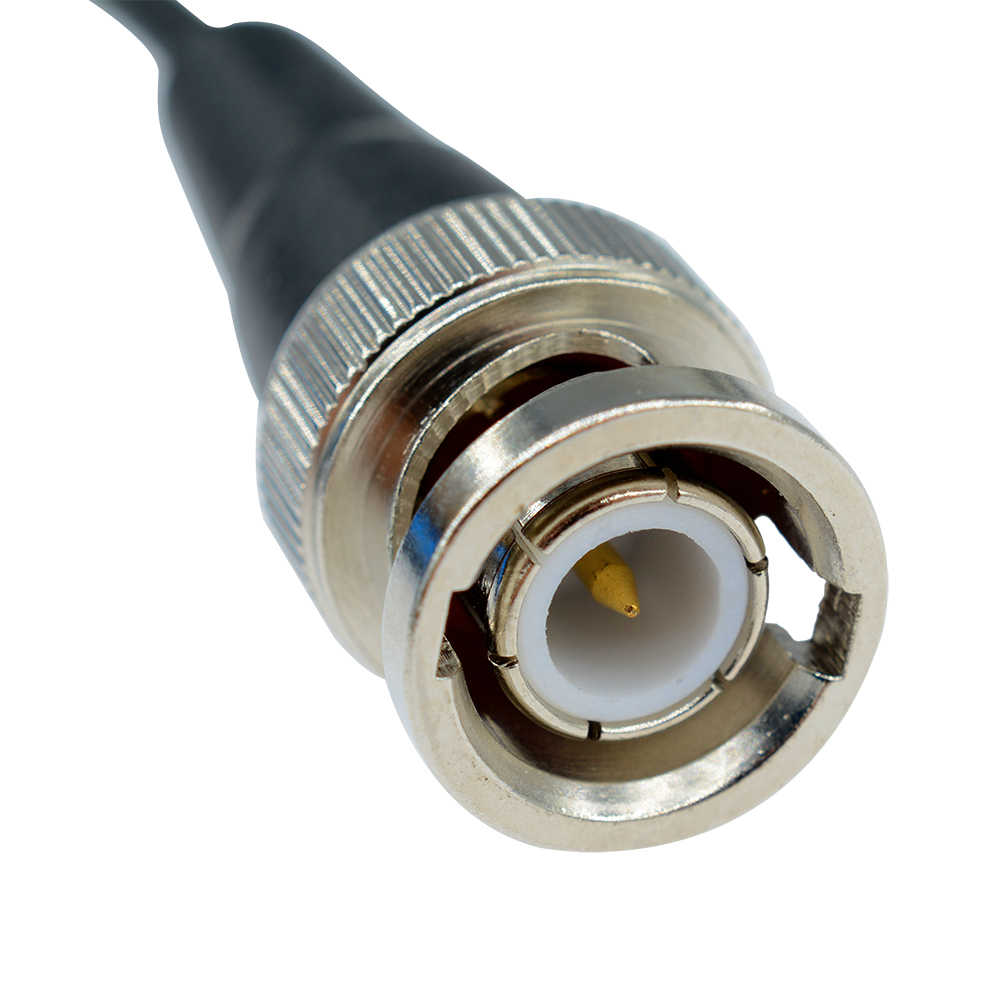

Bnc connector Pc#

and is found in most homes and offices in most countries of the world for single-line telephones. This is a modular connector wired for one plain old telephone service line (using two wires out of six available positions). The most familiar registered jack is probably the RJ11. The RJ abbreviations, though, only pertain to the wiring of the jack (hence the name registered jack) it is commonplace but not strictly correct to refer to an unwired plug connectors by any of these name. The RJ11 standard dictates a 2-wire connection, while RJ14 uses a 4-wire configuration, and RJ25 uses all six wires. The six-position plug and jack commonly used for telephone line connections may be used for RJ11, RJ14 or even R125, all of which are actually names of interface standards that use this physical connector. There is much confusion over these connection standards. For example, RJ11 uses a 6 position 2 conductor (6P2C) modular plug and jack, while RJ21 uses a 50-pin miniature ribbon connector. The physical connectors that registered jacks use are mainly of the modular connector and 50-pin miniature ribbon connector types.

Many of these interface standards commonly used in North America, though some interfaces are used world-wide. The standard designs for these connectors and their wiring are named RJ11, RJ14, RJ21, RJ48, etc. Registered Jack (RJ)Ī registered jack (RJ) is a standardized physical network interface - both jack construction and wiring pattern - for connecting telecommunications or data equipment to a service provided by a local exchange carrier or long distance carrier. Other connectors types include coax, v-type, fiber, video, SCSI, and modular. DIN connectors are typically used to connect a keyboard to computers.
Bnc connector serial#
Common types include DB-9 (a 9-pin serial or video interface), DB-15 (A 15-pin video interface), DB-25 (a 25-pin serial interface – RS-232 – or parallel printer interface), and DB-37 (a 37-pin serial interface based on RS-422).ĭIN ( Deutsche Industrie Norm, a German industrial standard) and Centronics connectors are similar to DB-type connectors except DIN connectors are circular instead of rectangular, and Centronics connectors contain “teeth” instead of pins. Several types of DB connectors exit and are distinguished by the number of pins they contain. Types of connectorsĬonnectors are also frequently labeled by their type.ĭB (data bus) connector serves as an interface between a computer and a peripheral device such as a printer or external modem they are distinguished as a rectangular row of “pins” (for male connectors) or “holes” (for female connectors). You can your imagination about how a connector’s gender is derived, but a “plug” is usually lebel a clear specification of exactly which of a mating pair of connectors should be used in the particular application. The type of Connectors used is usually a function of cable type.Ĭonnectors are also classified on their genders, and they do indeed “mate”. In this last category, connectors actually connect the cable to a terminating resistor or an array of resistors and are consequently known as terminators. Connect cable segments (e.g., thin coax to thin coax) and.Connect network interface cards, such as an Ethernet card, to a cable.Several types of connectors are available, serving various purposes. They can be differentiate according to their physical appearance and mating properties, such as jacks and plugs (male connectors) or sockets and ports (female connectors).Ĭonnectors attach components together. Connector in networking is used for termination of a segment of cabling or provides a point of entry for networking devices such as computers, hubs, and routers. In computer network or networking connectors are an essential component.


 0 kommentar(er)
0 kommentar(er)
